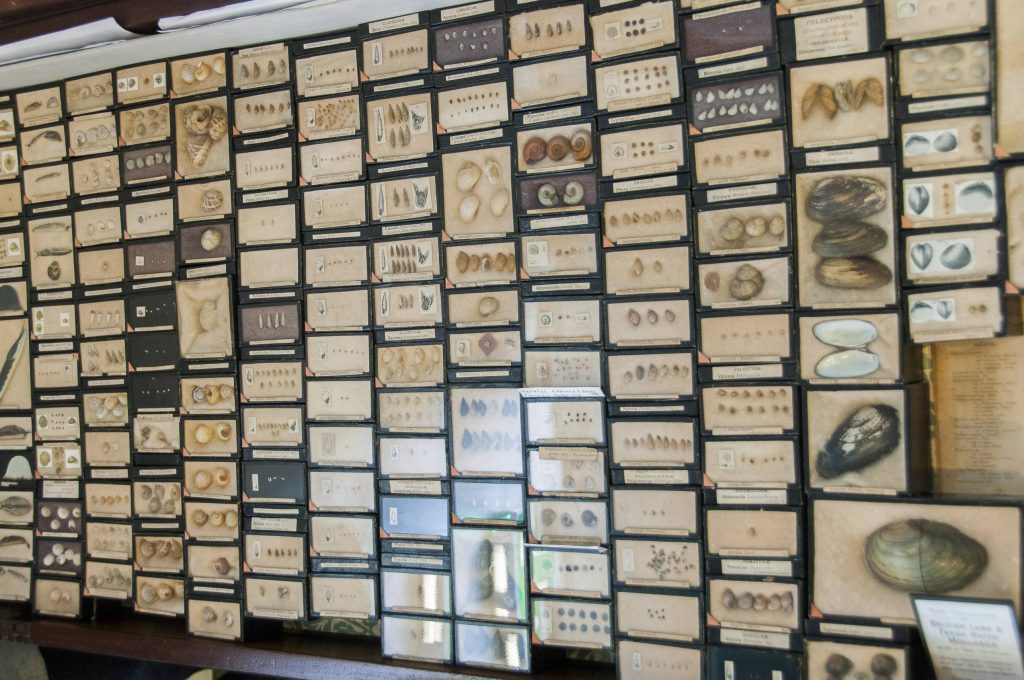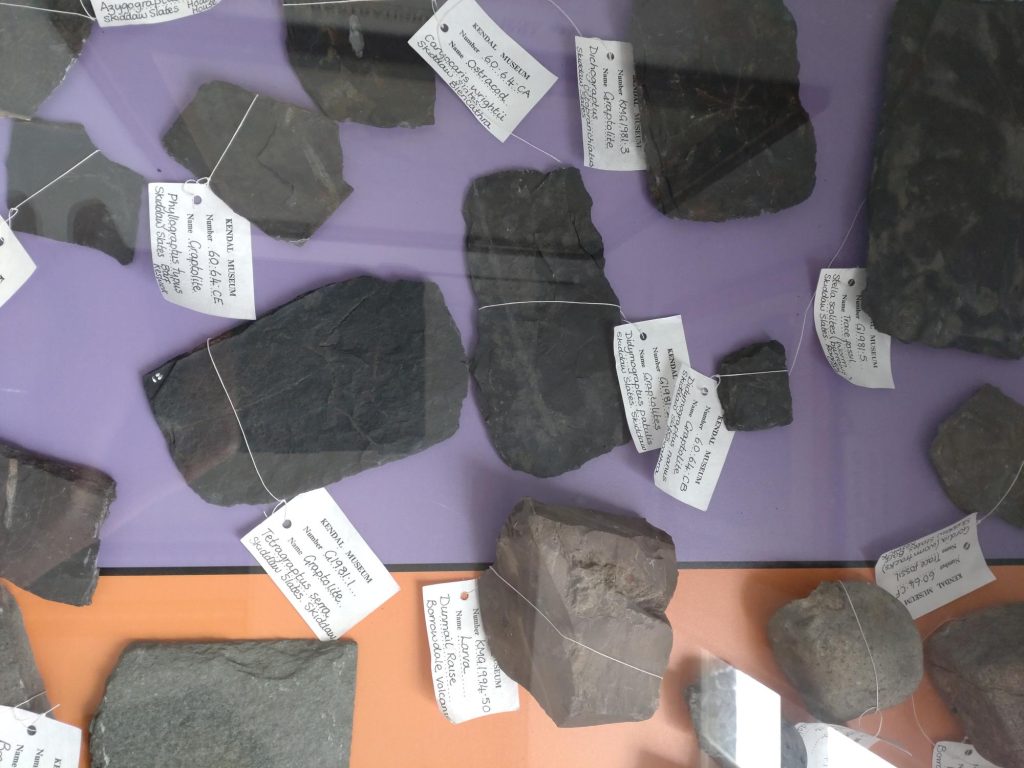This week, our Curator of Collections, Carol Davies, talks about “Mollusc” and “Graptolite”.
Mollusc

Molluscs are a group of animals without backbones(invertebrates) that have an unsegmented body, often covered by a shell(exceptions include octopuses and squid). Most molluscs are marine animals that live in habitats from shallow coastal areas to deep waters. Mollusc shells are usually coiled.
Molluscs have lived on earth for 530 million years.
Graptolite

Graptolites were floating animals that have been most frequently preserved as carbonaceous impressions on black shales. Fossil graptolites are thin, often shiny, markings on rock surfaces that look like pencil marks, and their name from the Greek for “writing in the rocks”.
Graptolites lived from the Cambrian Period, about 510 million years ago, disappearing in the Carboniferous Period, around 320 million years ago.
Carol Davies AMA
Curator of Collections
Kendal Museum

